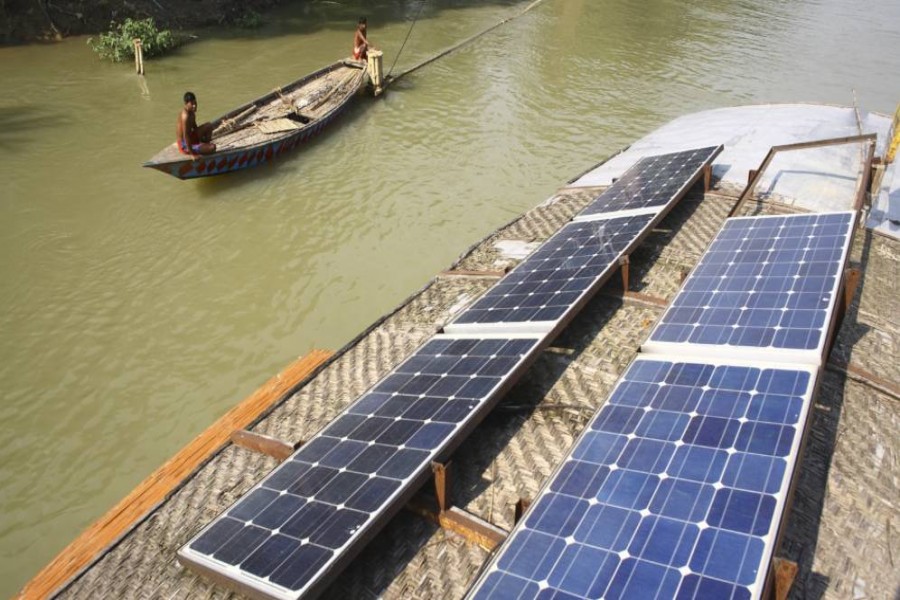Energy being the driver of economic growth and improving the quality of life, all the countries are eager to ensure energy security in order to sustain economic development, increase productivity and raise living standards. Energy security, said simply, is the capacity to access adequate energy supply at an affordable price. Thus, energy security is based on three A's-- availability, accessibility, and affordability.
The world's energy resources are not evenly distributed in terms of availability and to a large extent they are untapped. This makes it extremely difficult for a country with scarce energy resources to assure energy security using its own resources. This is particularly true for a country like Bangladesh, whose fossil fuel resources have been quite limited relative to its enormous population. Despite the fact that diversity of supply has always been a core principle of energy security, Bangladesh is still heavily dependent on natural gas and imported fuels. When it comes to electricity generation, the country today relies on oil and diesel for around a third of its generation capacity, which has a higher cost. The recent Russia-Ukraine war resulted in sharp increase of prices of oil and gas, which contributed to the fiscal burden placing multiple strains on economic development. Consequently, the government had to adopt austerity measures including reducing daily energy production and extending load shedding periods in the country. The power generation capacity added by oil and diesel now stands at 7579 MW. As the cost of electricity from utility-scale solar PV decreased by 85 per cent between 2010 and 2020, according to International Renewable Energy Agency (IRENA)'s latest cost analysis, the same capacity may readily be replaced with less expensive solar power. The biggest challenge for project sponsors is acquiring land as it requires around 3 acres of land to generate one megawatt (MW) of power from solar power plants. Given the challenge of organising a large chunk of land in a single region for building large-scale solar plants, it is preferable to concentrate on developing small units of 10-20 MW-sized solar plants across the country, for which appropriate land will be much easier to locate. If the government decides to construct 15 MW solar power plants on 45 acres of land in each of the country's 492 upazilas, a total of 7380 MW capacity can be added soon. This would save a significant amount of diesel and oil that would otherwise be required to produce the same amount of electricity. Currently, almost all upazilas are connected to the grid, making it possible to establish grid-tied utility-scale solar power plants that make use of grid infrastructure. Grid-connected solar plants don't require a storage facility, which reduces project costs by at least 40 per cent. It is feasible for the project sponsor to supply energy at an affordable tariff between 6-7 BDT/kWh, if they are provided with land and evacuation infrastructure by the government. This will add 7380 MW of decentralised capacity in the short term. At the level of the individual consumer, rooftop solar is another important application of solar energy under the net metering scheme. It's also a financially viable option that, with the proper monitoring in place, could eventually add up to 1000 MWp in the near future. Recently, the Power Division took the commendable step of constructing a 3 MW solar power plant with storage facilities to provide electricity to the isolated island of Monpura in the Bhola district. The West Zone Power Distribution Company Limited and Western Monpura Solar Power Limited are jointly implementing the solar project. Similar initiatives need to be taken in other remote islands in order to provide electricity as well as keep local environment pollution-free.
However, solar power alone will not be adequate to considerably increase the share of renewable energy in the energy mix, as indicated in the United Nation's SDG-7. Since renewables are becoming more and more competitive in the energy landscape, all of the available renewable resources including wind (onshore and offshore), marine energy, bio-energy, need to be thoroughly investigated. Meanwhile, the power division with assistance from USAID, constructed a wind map for Bangladesh that is web-based and accessible to all. Based on that study, lead researcher of USAID study team Mark D Jacobson believes that 5,000 MW wind power is easily possible in Bangladesh. In response to the wind study, the Sustainable and Renewable Energy Development Authority (SREDA) has moved forward with additional location-specific wind studies so that commercial projects may be built using the wind data derived therefrom. Wind power projects must be put into action right now if we want to expand renewable energy in the medium term. Experts further predict that 1000 MW of electricity can be produced using biomass, according to a countrywide assessment of biomass fuels that was conducted at the initiative of SREDA.
Bangladesh may be able to supply nearly one-third of its electricity demands from renewable energy sources by utilising the existing potentials. Renewables being the inexhaustible energy resources in nature, they may supply readily available and easily accessible energy at an affordable cost, thus significantly enhancing Bangladesh's energy security.
Mohammad Alauddin is former Chairman, Sustainable and Renewable Energy Development Authority


